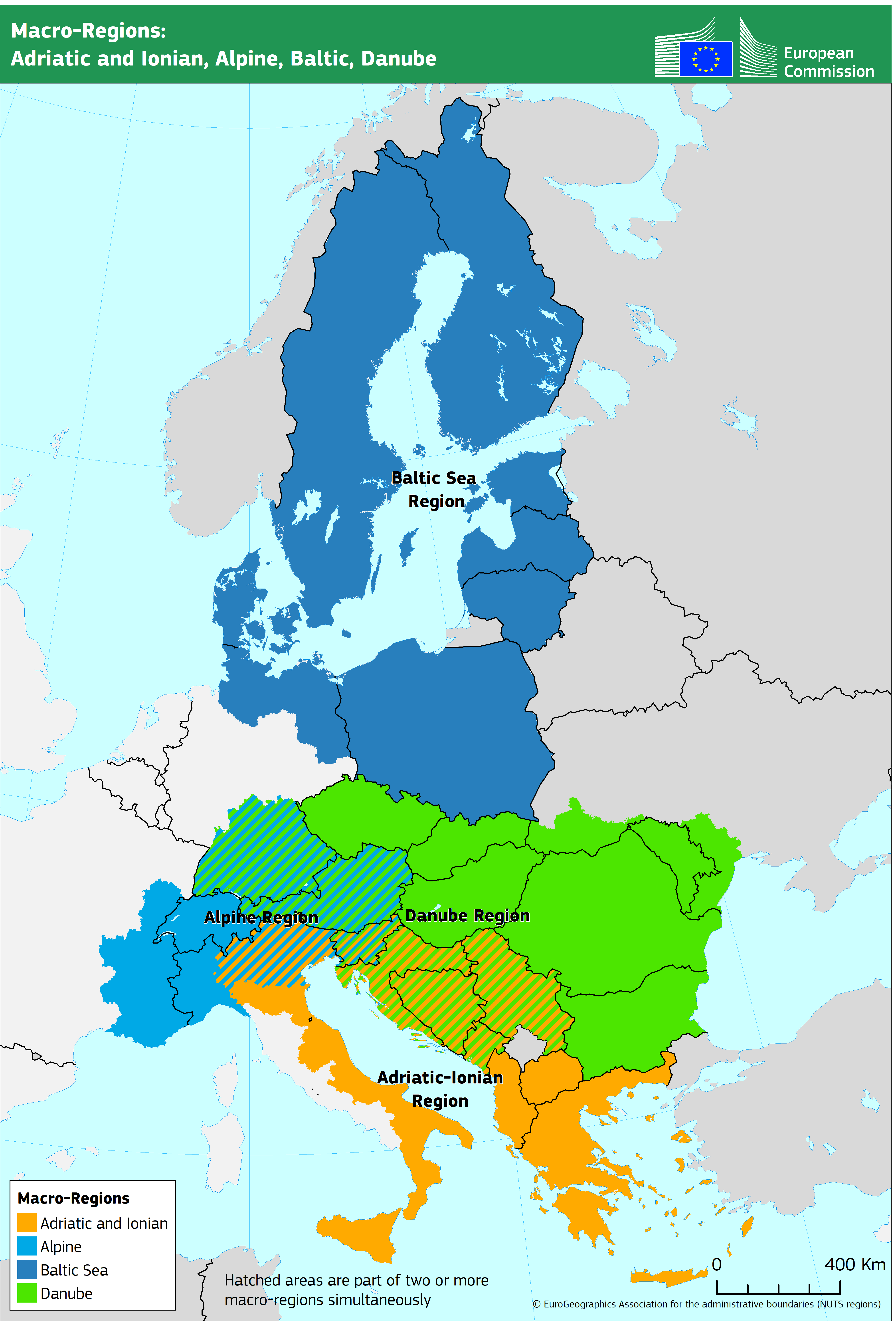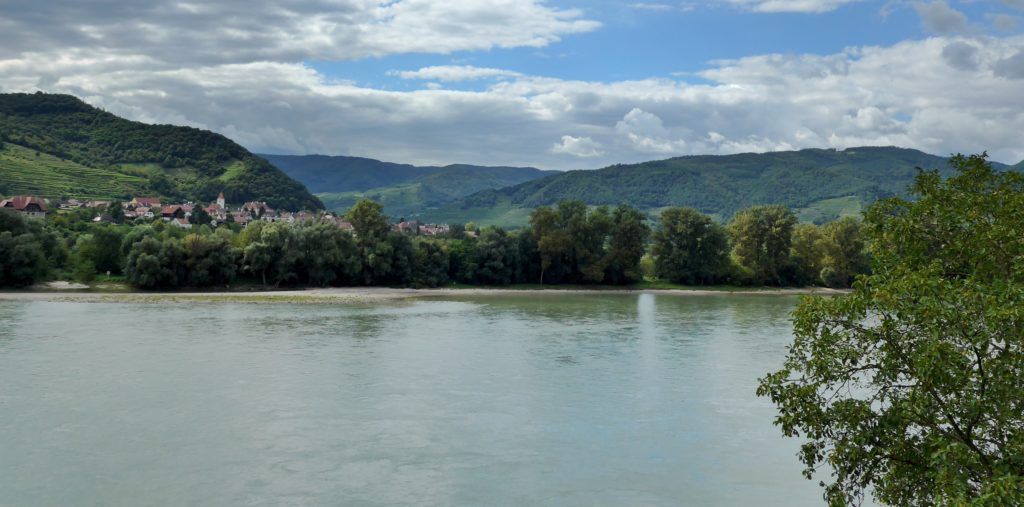External border projects
flowing into the Danube strategy
Making the Danube region stronger, more resilient, and more attractive to live in: 258 projects from five ENI CBC programmes have allocated 280 million to the Danube region in the 2014-2020 programming period, converging in making it “more social” and “more secure”. And more is to come with Interreg NEXT.
Between 12 and 16 June 2023, the 2nd edition of the “Embedding week” of the European Strategy for the Danube Region (EUSDR), put together around a virtual table Interreg programmes’ authorities, EU officials and many other observers and practitioners. “Cross-border projects, they are the natural allies of Macro-Regional Strategies”, said Robert Lichtner, representative from the Danube Strategy Point. “We are working to exchange experience between regions around basins and inland waters – said Magdalena Andreea, from DG MARE – with the aim to inspire other parts of Europe”.
 A Macro Regional Strategy (MRS) is a framework addressing the common challenges of a specific geographical area, where Member States and third countries can benefit from strengthened cooperation. Practically, it is a platform for strategic networking, where a broad range of people acts together to define concrete work plans that ultimately shape cooperation on the ground. The European Union has put in place strategies for four macro-regions across Europe, focusing on the Alpine, the Adriatic/Ionian, the Baltic Sea, and the Danube region. But why “embedding week”? By design, MRSs do not have their own funding: the successful implementation of a strategy therefore depends on its “absorption” by EU, national, regional, and other public and private funds, and initiatives. By bringing partners together, an “embedding week” helps the MRS to pursue its objectives to foster dialogue and coordination for the development of joint policies and actions on the ground. At the same time, Interreg programmes can profit to increase the coordination of investments and their territorial impact.
A Macro Regional Strategy (MRS) is a framework addressing the common challenges of a specific geographical area, where Member States and third countries can benefit from strengthened cooperation. Practically, it is a platform for strategic networking, where a broad range of people acts together to define concrete work plans that ultimately shape cooperation on the ground. The European Union has put in place strategies for four macro-regions across Europe, focusing on the Alpine, the Adriatic/Ionian, the Baltic Sea, and the Danube region. But why “embedding week”? By design, MRSs do not have their own funding: the successful implementation of a strategy therefore depends on its “absorption” by EU, national, regional, and other public and private funds, and initiatives. By bringing partners together, an “embedding week” helps the MRS to pursue its objectives to foster dialogue and coordination for the development of joint policies and actions on the ground. At the same time, Interreg programmes can profit to increase the coordination of investments and their territorial impact.
During the week, five online thematic workshops were set up by the EUSDR Presidency – together with the Danube Strategy Point – to foster the exchange for aligning funding across different EU sources, and for creating synergies between stakeholders. Each webinar addressed one of the goals of the EUSDR, paving the way for a “more connected”, “smarter”, “greener”, “more social” and “more secure” Danube region, in line with the European policy objectives for the next programming period. “A better cooperation at macro-regional level is essential to get better results for a more secure Danube region, for example in aspects such as human trafficking” stated Mrs. Claudia Singer, responsible for the Priority Area 10 on security, during the 4th day of the Embedding Week.
An essential outcome was the commitment of participating programmes and initiatives to embed the EUSDR goals through the declination of their priorities, specific objectives, and budget allocation. But cross-border projects are not the only allies of the MRS. Centrally managed programmes emerged clearly as very promising partners in the match between the territorial and the sectorial approach. Programmes such as Horizon Europe, COSME, LIFE, Erasmus+ proved to be formidable content providers for territorial experiments. Through different initiatives promoting research, innovation, environmental action, or mobility of researchers, the thematic “verticality” of centrally managed programmes can find a perfect field of experimentation in the “horizontal”, territorial, cross-border and transnational dimension roamed by the Interreg programmes.
Another feature emerged during the Embedding Week was the deep interconnection among thematic and sectoral aspects, making it difficult sometimes to separate topics by placing them within objectives or domains as settled by the regulations. As an example, topics related to the fight against climate change, the defence of biodiversity, the protection and management of water resources, could be considered both “smart” and “green” depending on the implementation approach. This interconnectivity of different practices should be considered an asset more than a problem, including the small dose of entropy that this can generate. All these contributions converge towards the implementation of European cohesion policies and ultimately constitute its glue.
Five ENI CBC and Interreg NEXT programmes insisting in the Danube Region have contributed to the debate during the Week, showing the contribution to the EUSDR of the cross-border cooperation between Member states and countries outside the Union. The relevance of Poland-Ukraine, Hungary-Slovakia-Romania-Ukraine, Romania-Ukraine, Romania-Republic of Moldova and Black Sea Basin has emerged in a double-fold dimension, both for their goals expressed under Interreg NEXT 2021-2027 and in the legacy provided by the almost concluded ENI CBC 2014-2020 programming period.
In total, 258 projects from the five ENI CBC programmes allocate 280 million to the Danube region: 46% of these projects falls under the goal of a “more social” Danube region, encompassing employment, skills development, culture, heritage, local & urban regeneration, and entrepreneurship. From a different angle, the biggest share of budget, equal to 152 M€ (54% of the total budget against 24% of projects), is dedicated to a “more secure” region, which includes well-functioning border crossing points, accessible border regions and joint response actions.
Looking at the future, the five Interreg NEXT programmes in the process of launching their calls for proposals have adopted the specific objectives 2.4 “promoting climate change adaptation, risk prevention and disaster resilience” and 2.7 “enhancing biodiversity, green infrastructure in the urban environment and reducing pollution”, aiming at contributing to both a “smarter” and “greener” Danube region. Four programmes, except Black Sea Basin, have also adopted the specific objective 4.6 “enhancing the role of culture and sustainable tourism”, stepping into action for a “more social” region.
Like other cooperation areas, the Danube region confirms itself as a territory with a strong concentration of funds, actions and therefore opportunities (together with risks), in which the promotion of active coordination and synergy is confirmed as a crucial requirement. In this regard, some suggestions were made by EC officials, by Interact and the EUSDR promoters themselves. But the development of well-functioning and shared tools capable of bridging from the programming period into a fully efficient implementation of programmes, remains one of the challenges on the agenda. The EUSDR could play an important role in this sense.
